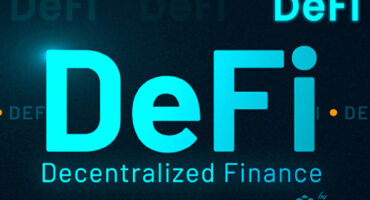DEXTools Top 10 Chains (by number of visits)
In its exponential technological growth...

Docy turns out that context is a key part of learning.






First Digital, a registered trust company based in Hong Kong, has recently unveiled this new stablecoin called First Digital USD (FDUSD). This stablecoin, issued by FD121 Limited and operating under the brand name “First Digital Labs,” will be backed by either one U.S. dollar or an asset of similar fair value, held in regulated financial institutions in Asia, ensuring a 1:1 ratio.
First Digital, a Hong Kong licensed trust company, launches a new USD pegged stablecoin (FDUSD), on #BNB Smart Chain.
— CZ 🔶 Binance (@cz_binance) June 1, 2023
Regarding potential Binance listing of FDUSD, Changpeng Zhao (CEO of Binance) responded to user comments by stating, “We don’t talk about “will/will not”. Just follow our official announcements.”
First Digital Labs will work together with regulatory authorities to guarantee adherence to existing and forthcoming laws and will actively contribute to the development of regulatory frameworks for FDUSD and upcoming stablecoins. By forming alliances with governmental entities and financial institutions, First Digital seeks to establish a fresh benchmark for stability and confidence in the realm of digital currencies.
The introduction of FDUSD brings increased diversity to the market, providing an alternative to the existing dominant stablecoins. Initially launched on Ethereum and BNB Chain, FDUSD has future plans to expand its compatibility to other blockchain platforms.
The FDUSD token strives to increase trust and transparency. It provides users with a dependable digital currency that lowers market volatility, enables quicker and more secure transactions, and supports efficient financial activities at reduced costs.
Let’s take an in-depth look at stable crypto assets and all that they entail.
Stablecoins are blockchain-based tokens whose value is tied to an external asset, such as national currencies or precious metals. They function as digital representations of the dollar, euro, and even gold. In other words, they are collateralized assets that can be bought and sold within the crypto market.
Stablecoins were created as a solution to the intrinsic volatility of native cryptocurrencies. While assets like Bitcoin and Ethereum attract users with their various economic benefits, their unpredictable price fluctuations also intimidate potential newcomers.
For instance, when settling a BTC transaction, the value of the currency can be significantly higher or lower than at the time of initiating the transfer, making it challenging to use as a reliable asset.
On the other hand, stablecoin prices tend to vary very little or almost not at all. Stablecoins are a specific type of cryptocurrency designed to minimize price volatility by linking their value to a stable asset, such as a fiat currency or a commodity. Designed to closely track the value of the national currency they emulate, they maintain a price with minimal daily fluctuations, similar to assets like the dollar or the euro. They also have the ability to mimic cryptocurrency features like fast settlement, global transfers, and in some cases, the elimination of intermediaries. As a result, stablecoins have become valuable tools for preserving wealth in highly volatile markets.
Some stablecoins (like DAI) are widely used as collateral in loans and other financial services that have gained popularity in the DeFi (Decentralized Finance) niche, because they have become a key tool for driving decentralized applications (DApps).
The origins of stablecoins can be traced back nine years ago, when the first proposals to create stable-priced digital assets emerged. The idea was to provide a payment instrument that would reduce the risks associated with cryptocurrency volatility while offering low operational costs and privacy.
In mid-2014, initiatives such as BitUSD and NuBits were introduced. Around the same time, the launch of one of the most popular stablecoins today, Tether (then known as Realcoin), was being developed, and was officially issued at the end of 2014 on the Bitcoin Omni Layer sidechain.
Other notable stablecoins like DAI entered the market in 2017. DAI, launched on the Ethereum network, operates with smart contracts that use ETH as collateral and replicate the price of the US dollar.
Stablecoins are tokens issued on multiple blockchain networks and sidechains, and their behavior depends largely on the blockchain to which they belong.
For example, stablecoins launched on Ethereum have their own smart contracts known as ERC-20 tokens. All stablecoin transactions within the network are recorded in the public ledger, similar to transactions with native coins like Bitcoin or Ether. However, unlike these, stablecoins do not have their own blockchain.
Stablecoins depend on a provider, company, or governance system, which determines how many tokens are issued, what units they are linked to, and how their reserves are backed. In other words, these entities play a significant role in the stablecoin economy.
Although they may have certain similarities, stablecoins and CBDCs are different. Stablecoins are privately issued digital currencies backed by assets, aiming to maintain a stable value. CBDCs, on the other hand, are digital currencies issued and regulated by central banks, backed by their credibility. Stablecoins focus on efficient transactions and cross-border use, while CBDCs aim to enhance the existing monetary system and provide digital alternatives to traditional cash.
Stablecoins can be categorized into four general types based on how they are pegged to the value of other assets.
1-Fiat-Backed Stablecoins
They are the most popular type in the market. They are directly pegged to a national currency at a ratio of 1:1. For example, each token issued represents one US dollar, euro, or yen. Users deposit fiat currency into a bank account and receive these tokens in return.
These stablecoins typically have a fiat guarantee, which means that the stablecoin provider is responsible for maintaining a reserve of fiat currency proportional to the tokens in circulation.
2-Crypto-Backed Stablecoins
The issuance of these assets solely depends on the smart contract that enables their existence, minimizing the need to trust a third party. In other words: it is programmable money. They use other crypto assets as collateral, even though the stablecoin reflects the price of a fiat currency. One good example is DAI. Users can deposit ETH or other cryptocurrencies into the MakerDAO contract, the company behind DAI, to guarantee the creation of a new token. However, the price of the asset will not mimic ETH but rather the US dollar to which it is pegged!
Due to the absence of a company responsible for issuing and managing the asset, these stablecoins often have their own governance systems where users can participate and vote on monetary policies.
3-Commodity-Backed Stablecoins
They are similar to fiat-backed stablecoins, but they are backed by physically reservable tradable assets such as precious metals. Gold is the most commonly used commodity to create these stablecoins, although there are also coins backed by oil, real estate, and other rare metals. Pax Gold (PAXG) is one of the well-known stablecoins in this category.
The provider of the stablecoin owns the tangible asset, which is kept in custody to issue new tokens on the network. Unlike fiat-backed or crypto-backed stablecoins, they can appreciate over time.
4-Algorithmic Stablecoins
They are the least known stablecoins in the market. The value of these coins is not backed by fiat or other cryptocurrencies but rather linked to them through algorithms that mimic their price. One example is Ampleforth (AMPL), an algorithmic stablecoin that adjusts its supply in response to changes in demand. When the price is above the target price, the supply of AMPL tokens increases, and when the price is below the target, the supply decreases. This mechanism aims to maintain a stable value over time.
While they offer several benefits, they also have drawbacks. Let’s explore the advantages and disadvantages of crypto stablecoins:

In its exponential technological growth...


BNB launches opBNB Testnet. The BNB Chain team ...